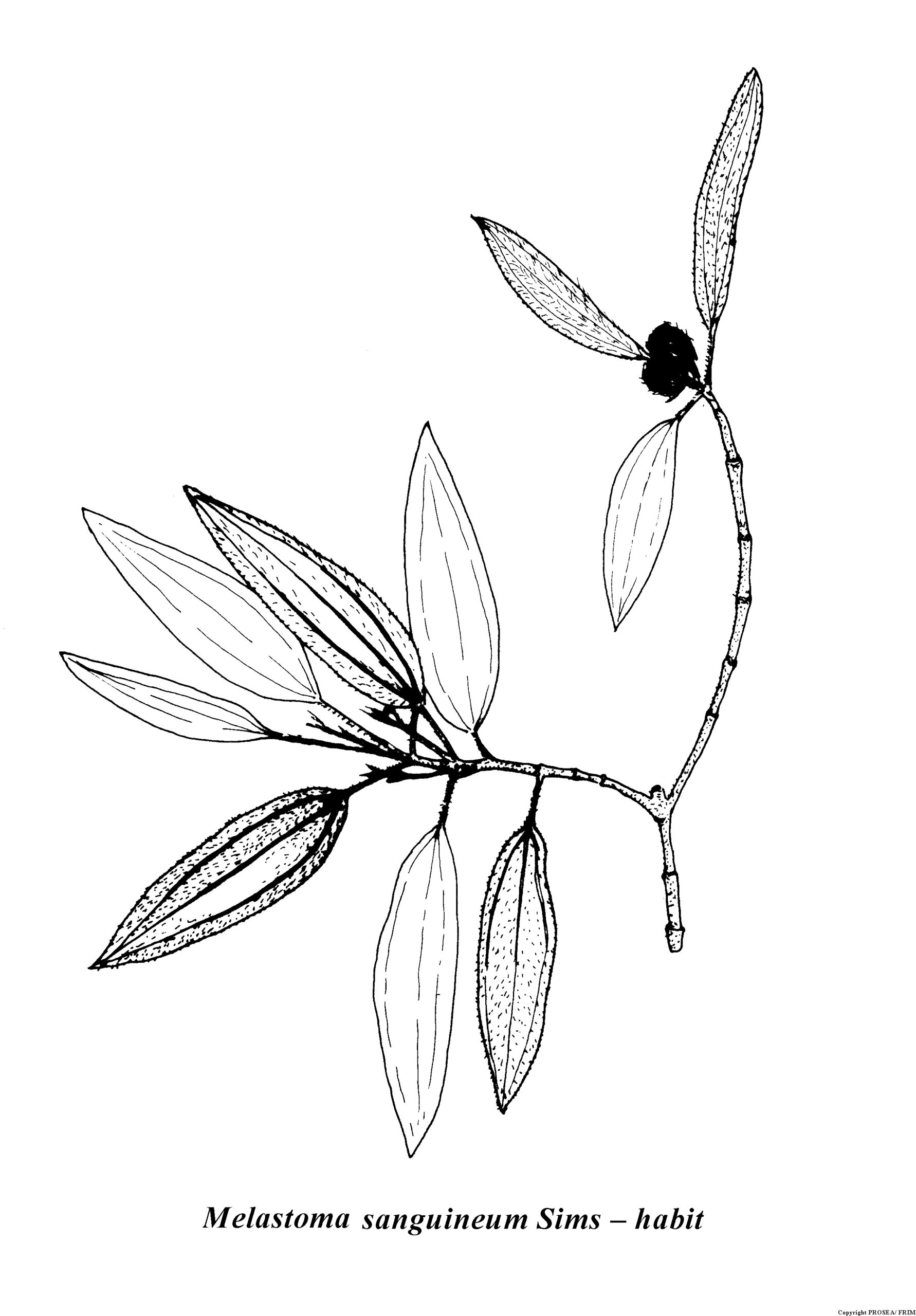Melastoma sanguineum Sims
Family
Melastomataceae
Synonyms
M. decemfidum Roxb. ex Jack.
Vernacular Names
| Malaysia | Sendudok, sendudok gajah (Peninsular). |
| Cambodia | Prea, kenchea das. |
| Thailand | Mang khre khon, mang khre chaang, bre chaang (Peninsular). |
| Vietnam | mua b[af]. |
Geographical Distributions
Melastoma sanguineum is distributed from Burma (Myanmar), Thailand, southern China, Indo-China to Malaysia, Sumatra, Borneo, the Lesser Sunda Islands and the Moluccas.
Description
M. sanguineum is a shrub or small tree that can reach up to measure 10 m tall. The young branches are quadrangular, covered with adpressed or spreading, red to brown scales or bristles while its bark is brown or grey in colour.
The leaves are lance-shaped or elliptical, seldom ovate in shape, with a size of measuring 3-17 cm x 1-6 cm, rounded or acute base, acute or acuminate apex, hairless or hairy, with 5- or 7-veined and they are pale green or tinged red beneath. The cyme is terminal, with 3-5-flowered or solitary flowers.
The flowers are normally 5-merous, bell-shaped hypanthium, with a size of measuring about 7-15 mm x 5-14 mm and covered with reddish bristles. The sepals are lance-shaped or triangular and with intersepalar emergences while the petals are wedge-shaped-obovate, with a size of measure 33-46 mm x 22-33 mm and violet. The stamens are dimorphic, violet anther of outer stamens, connective prolonged and with measuring 8-12 mm long filaments while the anther of inner stamens are yellow in colour, connective but not prolonged and with measuring 5-8 mm long filaments. The ovary is slightly shorter than hypanthium and crowned by golden bristles.
The capsule is fleshy, with a size of measuring 8-19 mm x 8-18 mm, irregularly longitudinally opened at maturity and exposes the solid yellow pulp with orange seeds.
Ecology / Cultivation
M. sanguineum is found in disturbed forest, along streams and roads, in open locations and savanna from sea-level up to 2300 m altitude.
Line Drawing / Photograph
References
- Plant Resources of South-East Asia No. 12 (2): Medicinal and poisonous plants 2.


